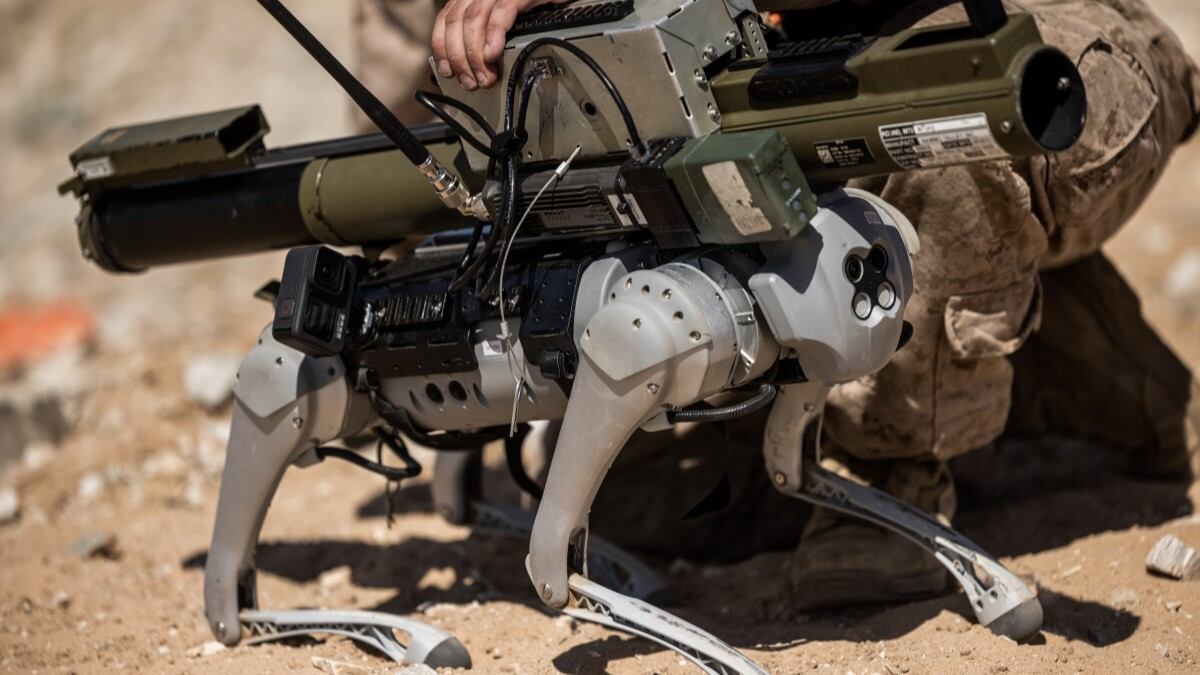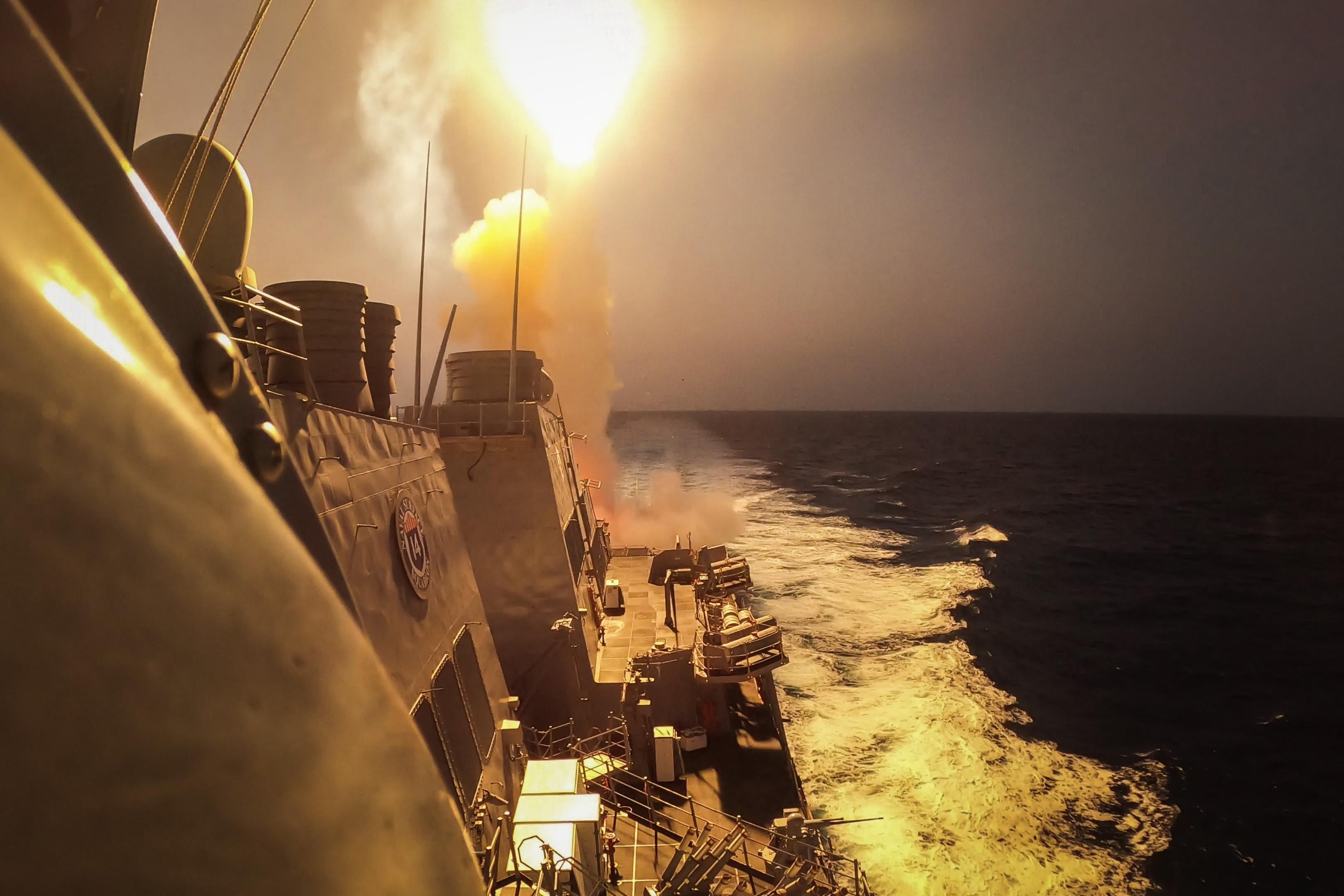Marines strapped a rocket launcher to a so-called robotic goat in the California desert in September, in a test of robots’ abilities to carry and fire weapons in battle.
Marines with Tactical Training and Exercise Control Group conducted the proof-of-concept test at Twentynine Palms, California ― a vast installation with many ranges where Marines can do live-fire tests and training, according to a Marine Corps news release.
“Instead of having a Marine handle the weapon system, manipulate the safeties, we could put a remote trigger mechanism on it that allowed it to all be done remotely,” 1st Lt. Aaron Safadi, officer in charge of the group’s emerging technology integration section, said in the release. “The Marine could be behind cover and concealment, the weapon system could go forward, and the Marine could manipulate the safeties from a safe place while allowing that weapon system to get closer to its target.”
In a video posted by the Marine Corps of the Sept. 9 test, the goat-ivated Marines watched as a robotic quadruped stood up onto its four haunches of sorts and walked around, making clacking sounds on the ground.
The platform appears to be the Go1 robot dog made by the Chinese robotics company Unitree, whose website advertises the quadruped as “Lightweight, Take It Everywhere.”
Unitree sells a basic version of the man’s bionic best friend for $2,700 (plus $1,000 in shipping) on its website and $4,899 on Amazon.
Marine Corps Times asked the Office of Naval Research about the use of technology by a Chinese company in testing and didn’t immediately receive a response.
The quadruped itself wasn’t the focus of the Marine Corps’ test, Marine spokesman Capt. Johnathon Huizar said in an email Friday to Marine Corps Times. The goat was just a firing platform for a Kairos remote trigger mechanism that was fixed to a M72AS light anti-tank weapon trainer, according to the spokesman, who confirmed that the quadruped was made by Unitree.
“The goat concept came from the fact it was to be used as a pack animal to haul payloads of various forms from point A to point B,” Huizar said.
The goat is equipped with sensors and can stand up and “beg,” one Marine says in the Corps’ video as the creature gets into a kneeling position and clasp its limbs together as if pleading for something.
“It’s creepy,” another Marine appears to say.
Not really disputing that Marine’s observation, the first Marine replies with a laugh, “The bigger one, they actually put a goat-head mask on it.”
It can growl and bark, she said.
Another Marine cuts in to note that this particular robotic goat isn’t a military platform that would be issued to Marines. Rather, he says, it’s a test platform for determining how robots like it could be used.
Soon after, there’s a shot in which the robot sways its hips from side to side as if moving to an invisible rhythm.
One Marine messes with the wildlife by gently kicking the robot goat, but the goat is ready. It remains upright and takes a bunch of quick steps sideways to recover from the blow.
Finally, the Marines attach an M72 light anti-tank weapon to the goat’s back and fire into the desert.
“Nice!” a Marine is heard saying in the video.
The Marine Corps’ test with the goat was conducted in concert with the Office of Naval Research, according to the news release. News of the test was first reported by The War Zone.
Robots have become one focus of the Marine Corps’ modernization initiative, Force Design 2030, aimed at getting the service branch ready for conflict with a great power like China.
“Marines must fight at machine speed or face defeat at machine speed,” a June document laying out updates to the initiative warned.
The test in California wasn’t the first time the U.S. military has experimented with robotic “animals.”
The Navy has been experimenting with using robot dogs to help with ship maintenance.
At the Association of the United States Army’s annual conference in Washington in 2021, a team from Boston Dynamics took its robot dog Spot for a walk around the D.C. convention center, attracting the undivided attention of one flesh-and-blood canine who was getting walked nearby.
Observation Post is the Military Times one-stop shop for all things off-duty. Stories may reflect author observations.
Irene Loewenson is a staff reporter for Marine Corps Times. She joined Military Times as an editorial fellow in August 2022. She is a graduate of Williams College, where she was the editor-in-chief of the student newspaper.









